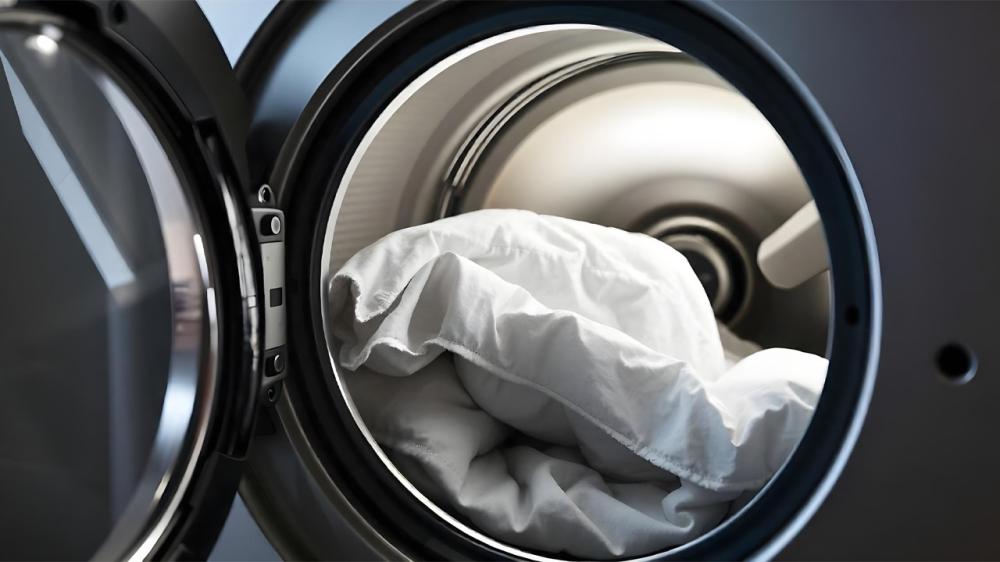
Why Do Pillows Turn Yellow? Causes, Prevention, and Cleaning Tips
Pillows are essential to a good night’s sleep, but over time, they may develop unsightly yellow stains. If you’ve ever wondered why your once-pristine pillows lose their brightness, this guide explains the causes, prevention methods, and how to restore their freshness.
Why Do Pillows Turn Yellow?
Pillow yellowing is a natural phenomenon caused by various factors, primarily moisture and oils. Here are the most common culprits:
1. Moisture and Sweat
Nightly Perspiration: On average, people lose up to a liter of water during sleep. This sweat seeps into the pillow, contributing to yellow stains over time.
Wet Hair: Going to bed with damp hair introduces extra moisture that accelerates discoloration and damages the pillow's filling.
Humidity: High indoor humidity levels affect pillows, reducing their loft and encouraging stains.
2. Oils and Lotions
Skin Oils: Natural oils from the skin accumulate on the pillow over years, causing gradual yellowing.
Lotions and Perfumes: Evening skincare routines that include lotions or perfumes can seep into the pillow fabric and contribute to staining.
3. Saliva
Drooling during sleep is another major cause of yellowed pillows. Saliva, combined with moisture, creates noticeable discoloration.
How to Prevent Pillow Yellowing
Prevention is easier than dealing with yellowed pillows. Here are some practical tips:
1. Use Protective Pillow Covers
Invest in high-quality pillow protectors designed to block moisture and oils. These covers act as a barrier, prolonging the life of your pillow.
2. Maintain Cleanliness
Wash pillowcases regularly, ideally every week, to minimize oil and sweat buildup.
Wash the pillow itself every 2-3 months following the manufacturer’s care instructions.
3. Avoid Sleeping with Wet Hair
Dry your hair thoroughly before bed to reduce excess moisture.
4. Minimize Lotions Before Bedtime
If you apply skincare products, wait for them to fully absorb before resting on your pillow.
How to Clean Yellowed Pillows
If your pillows are already yellow, try these effective cleaning methods to restore their whiteness:
1. Lemon Juice and Baking Soda Paste
Mix lemon juice and baking soda into a paste.
Apply it to the stained areas and let it sit for 30 minutes.
Rinse thoroughly and allow the pillow to air dry.
2. Hydrogen Peroxide Solution
Combine equal parts hydrogen peroxide and water.
Dab the solution onto the stains and let it sit for a few minutes.
Rinse with water and dry completely.
3. Vinegar Soak
Submerge the pillow in a 1:1 mixture of warm water and vinegar for a few hours.
Wash with a mild detergent afterward to remove any lingering vinegar smell.
4. Oxygen-Based Bleach
Use a non-chlorine bleach designed for fabrics.
Follow the product instructions for soaking the pillow to remove stains.
5. Sunlight Exposure
After spot cleaning or washing, hang the pillow in direct sunlight to naturally bleach and freshen it. Rotate it occasionally for even exposure.
Why Cleaning Your Pillow Matters
Regular cleaning doesn’t just improve your pillow’s appearance; it also enhances hygiene and promotes better sleep. Yellowing is caused by sweat, oils, and saliva, which can harbor allergens and bacteria. By maintaining your pillows, you ensure a healthier sleep environment.
Time to Refresh Your Pillows
If yellow stains persist despite your best efforts, it might be time to replace your pillow. Pair your new pillow with a durable pillow protector to prevent future discoloration and extend its lifespan. With proper care, you can keep your pillows fresh, clean, and inviting for years to come.

